Note: Jens Christian Grondahl’s 2005 novel, An Altered Light, was SHORTLISTED for the IMPAC Dublin Award, the biggest prize in the literary world.
“For me it was never a question of forgiveness, once you were gone. It doesn’t make sense to stand there forgiving or not forgiving a stone, be it limestone or granite. Your life, any life, is reduced to a handful of facts when it ends. It was. This and that happened, and we can make of it what we like….It is absurd of me to address you but if I don’t it will be as if I, too, were just another fact, like a stone, nothing more.” Ellinor to Anna, long after Anna’s death.
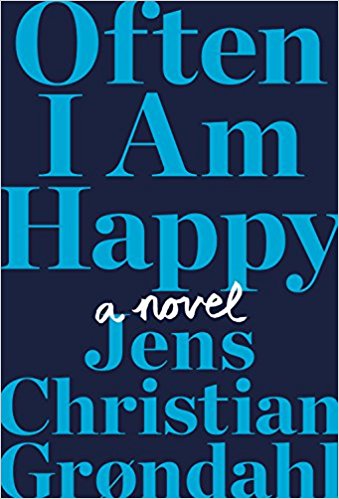 In Jens Christian Grondahl’s Often I Am Happy, Ellinor, a Danish woman who is seventy as this novel opens, is the only survivor among four close friends – two couples – from their earlier lives in Copenhagen. Now alone, Ellinor is reliving her life, trying to gain resolution and reconciliation for some of the issues she has faced in her life and marriage. Anna, her best friend, has always been very much a part of Ellinor’s life, even though she died thirty years ago when Anna’s twin boys were only five, and as Ellinor revisits episodes in her own long life, she continually “chats” with Anna, her one-sided “conversations” swirling around in time as she shares her feelings and observations with Anna. Gradually, the reader is able to piece together Ellinor’s past and the complex relationship she has had with Anna, with her own husband Henning, and with Anna and her husband Georg. The initially confusing details of their lives together quickly become clearer as the nature of their unbreakable bonds come into sharper focus. The novel which results, mesmerizing as much for the skill of author Jens Christian Grondahl in controlling his release of information as it is for the psychological interconnections among his main characters, is masterfully constructed to reveal both surprises and devastating revelations which the two couples face, often together.
In Jens Christian Grondahl’s Often I Am Happy, Ellinor, a Danish woman who is seventy as this novel opens, is the only survivor among four close friends – two couples – from their earlier lives in Copenhagen. Now alone, Ellinor is reliving her life, trying to gain resolution and reconciliation for some of the issues she has faced in her life and marriage. Anna, her best friend, has always been very much a part of Ellinor’s life, even though she died thirty years ago when Anna’s twin boys were only five, and as Ellinor revisits episodes in her own long life, she continually “chats” with Anna, her one-sided “conversations” swirling around in time as she shares her feelings and observations with Anna. Gradually, the reader is able to piece together Ellinor’s past and the complex relationship she has had with Anna, with her own husband Henning, and with Anna and her husband Georg. The initially confusing details of their lives together quickly become clearer as the nature of their unbreakable bonds come into sharper focus. The novel which results, mesmerizing as much for the skill of author Jens Christian Grondahl in controlling his release of information as it is for the psychological interconnections among his main characters, is masterfully constructed to reveal both surprises and devastating revelations which the two couples face, often together.
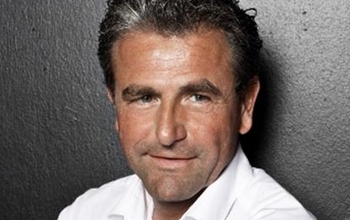 The novel opens at a graveyard, where Ellinor is addressing Anna, for whom she has always brought flowers for her birthday, commenting on the novel’s first page that “our” husband, who died recently in the shower, when he was seventy-eight, is not able to lie beside Anna because in the thirty years since Anna’s death, the gravesite has become more crowded. Ellinor shares her feelings regarding Anna’s death, obviously sudden, and her funeral, telling her that even now she “cannot grasp the idea that people [like her own husband Henning] may just disappear; it is like eternity. Impossible to imagine. But there we were, Georg, the twins, and I [at your gravesite].” She is quick to tell Anna that “of course I didn’t want him at all for the first long stretch of time.” Switching again to the present, she indicates that “the twins,” Anna’s sons, have been “down on her lately,” perhaps because she has been “too abrupt, too determined,” and has sold the house where she eventually lived with their father after Anna’s death, admitting that while she may be “a little callous,” she does find the twins “terribly sentimental.” She does not see why she should “sit like some custodian of their childhood home now that Georg is gone.” She has mourned and is sad that they do not realize that she is in shock, if she is, in fact, in shock.
The novel opens at a graveyard, where Ellinor is addressing Anna, for whom she has always brought flowers for her birthday, commenting on the novel’s first page that “our” husband, who died recently in the shower, when he was seventy-eight, is not able to lie beside Anna because in the thirty years since Anna’s death, the gravesite has become more crowded. Ellinor shares her feelings regarding Anna’s death, obviously sudden, and her funeral, telling her that even now she “cannot grasp the idea that people [like her own husband Henning] may just disappear; it is like eternity. Impossible to imagine. But there we were, Georg, the twins, and I [at your gravesite].” She is quick to tell Anna that “of course I didn’t want him at all for the first long stretch of time.” Switching again to the present, she indicates that “the twins,” Anna’s sons, have been “down on her lately,” perhaps because she has been “too abrupt, too determined,” and has sold the house where she eventually lived with their father after Anna’s death, admitting that while she may be “a little callous,” she does find the twins “terribly sentimental.” She does not see why she should “sit like some custodian of their childhood home now that Georg is gone.” She has mourned and is sad that they do not realize that she is in shock, if she is, in fact, in shock.
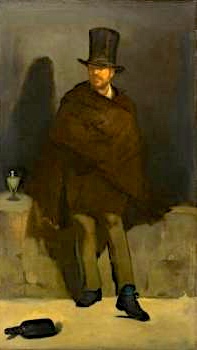
One of the times in which Ellinor connected with Morten, one of the twins, was in their discussion of Manet’s painting, The Absinthe Drinker, and whether the subject’s left leg was correctly drawn.
Within these first ten pages, the author has conveyed all this background information and past history, without telling any sordid details, at the same time that he has raised expectations and suspense regarding the circumstances of Ellinor and her relationships. As the book develops, Ellinor tells Anna about the twins and how different they are, Stefan being a financial consultant now and Morten being an art historian. The twins’ marriages and their lifestyles, and the contrasts with her own – “a girl from the gutter” – lead her to wonder “When did I become a stranger again? Was I one all along?” Her earlier marriage to Henning, which she herself describes as a wedding between “posh and threadbare,” like his apartment, and the couple’s friendship with Anna and Georg put their many-sided relationship into perspective, and when Anna and Georg’s twins are old enough to be left with their grandparents for a weekend, Ellinor happily agrees to go skiing with Anna, Georg, and Henning, something she has never done before.
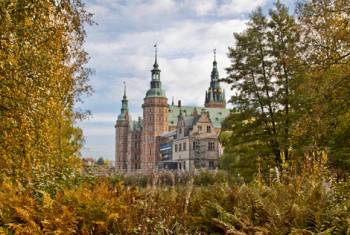
Ellinor, as a child, spent time with neighborhood children playing in the woods near Fredericksborg Castle and in the coal piles of the waterfront.
The novel eventually expands into the broader love stories of Ellinor’s mother, the war, and its aftermath, also contrasting those themes with the petty carping between Stefan, one of the twins, his wife, and their attitudes toward Ellinor. Ellinor’s personal limitations become obvious through her actions, and her intentions to improve her life become admirable. Grondahl specializes in the kind of psychological novel that this novel becomes, and he concerns himself with many of the same issues and themes as he does in his earlier novel, An Altered Light. In that novel, a middle-aged lawyer must deal with a divorce after a long marriage, and she must figure out who she is. As in this novel, the main character explores her present life in an effort to live the future as she wants to live it. The hidden secrets in the lives of other people in her life – parents and friends – affect her and are as much a part of her life as they are in Ellinor’s life. The effects of the lives of our parents and others we know in determining who we are and what we become cannot be underestimated, he believes, and the biggest lesson that we can learn is how to live with what we know or discover without being overwhelmed by it.
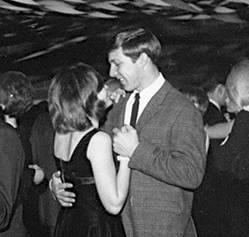
Ellinor had a B&W picture of the twins’ parents staring lovingly at each other at a dance contest framed for the twins when she married.
Ellinor’s feelings of identification with or obligation toward Anna are ultimately illustrated by her admission that “When I moved in with Georg and the boys, I had the picture framed of the two of you dancing a slowfox a few years before we met. I hung it on the wall in their room, so that they could see how much their parents had loved each other. It’s the only thing that counts for a child. We forgive our parents when they forget us, if only they love each other.” A thoughtful novel, well developed with insights into our relationships and obligations both to ourselves and to those we love.
ALSO by Grondahl: AN ALTERED LIGHT
Photos, in order: The author’s photo is from http://www.arnoldbusck.dk/
Manet’s The Absinthe Drinker, painted in 1859, was his first major work of art. The glass of absinthe on the wall beside the man was added in 1867-1872. https://upload.wikimedia.org/
The photo of Fredericksborg Castle, where Ellinor played in the woods sometimes (when she was not playing in the coal heaps on the harbor), is from http://www.dnm.dk/
The 1960s dance, where Anna and Georg competed, is from https://www.mnstate.edu/
